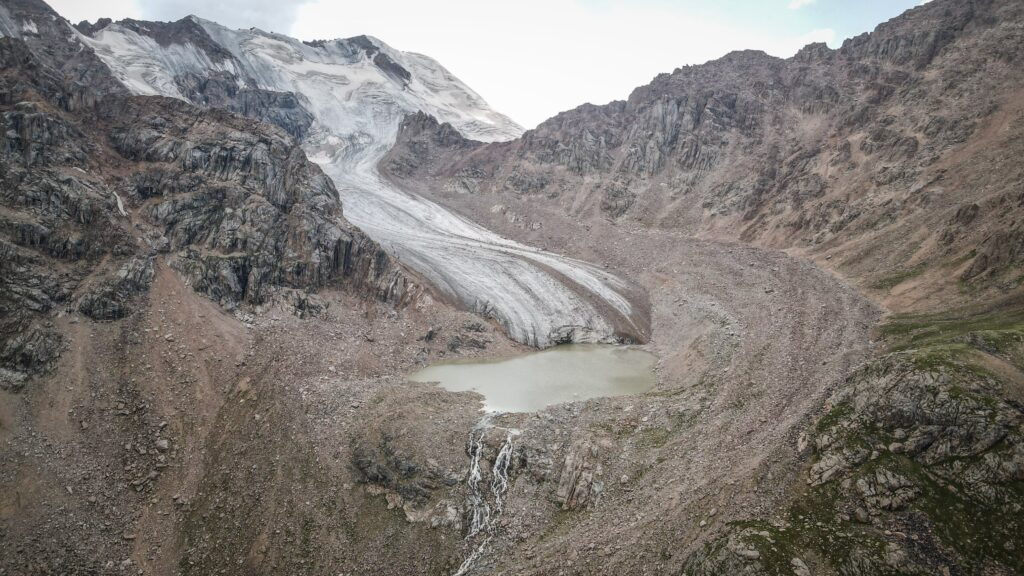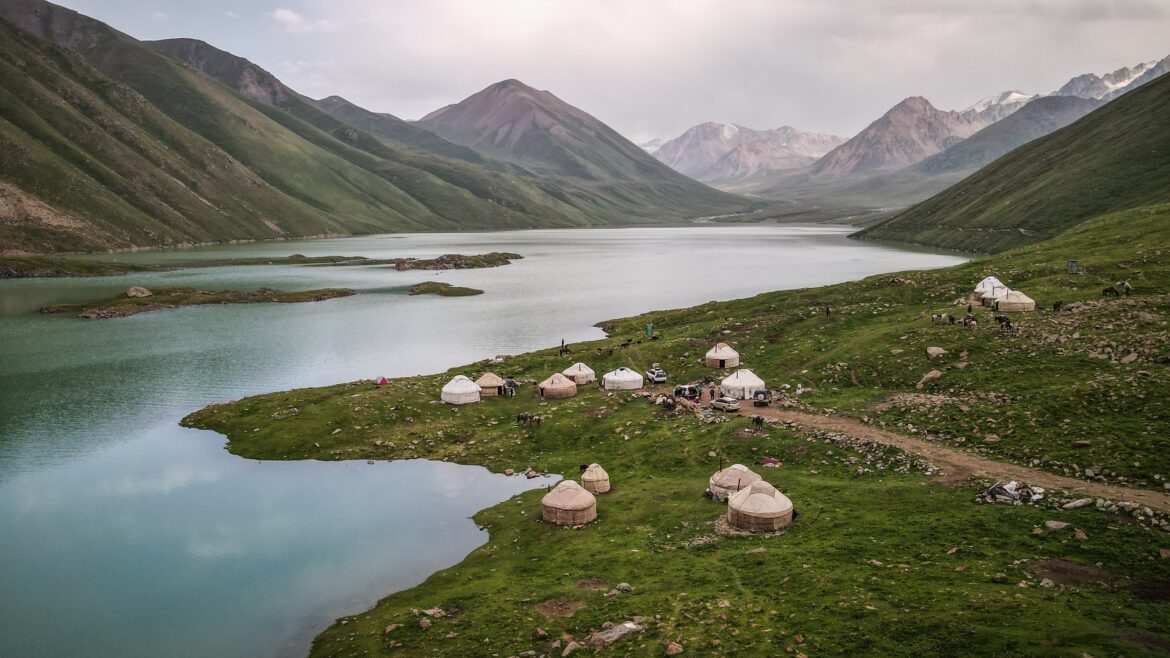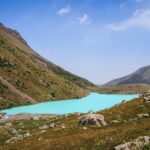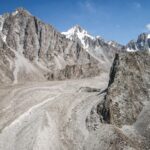Kol-Ukok sits at about 3,000 meters above sea level and is known for its striking turquoise-blue water that reflects the surrounding snowcapped peaks. The lake is glacial in origin, formed by meltwater from the surrounding mountains, which explains its cold, crystal-clear water. The name translates roughly to “the lake in the hollow” or “lake in the valley.” The area around the lake is rich in wildlife, with marmots, eagles, and sometimes ibex spotted in the region.
How to get there?
Kol-Ukok is a popular trekking destination. To reach it, travellers usually start from the village of Kochkor and hike through valleys, alpine meadows, and pastures where semi-nomadic herders graze livestock in the summer.
Kochkor is well-connected by road, and you can reach it by shared taxi, marshrutka (minibus), or private car from larger towns like Bishkek or Karakol. From Bishkek, the drive usually takes about 4–5 hours. From Karakol, you must count at least 6 hours. The northern route around Issyk-Kul is in better condition but slightly longer than the southern one. You can take a minibus to Balykchy and change there for another minibus or shared taxi going to Kochkor.

From Kochkor, the journey continues on foot, by horse or by car. The usual route starts at the small village of Isakeyiev, where trails lead into the mountains. You can get there by taxi from Kochkor. Look for the old Ladas as they are much cheaper (I paid 200 SOM). Avoid taxi drivers on the main street as they charge quite ridiculous amounts. If the driver is willing to continue past the village and follow the dirt road, it is worth paying some extra, as hiking there isn’t particularly interesting.
The hike typically takes around 5–6 hours one way, depending on pace and weather, and involves steady climbing through pastures and alpine meadows before reaching the lake at an elevation of around 3,000 meters.
As of July 2025, it looked like they had just made a new road there. The walk on it was pretty boring, and the mountain views were not spectacular at all. Honestly, next time I would just arrange a taxi all the way to the lake, or I would try to hitchhike, although the traffic is minimal, so patience is needed.
Many visitors arrange guides and horses in Kochkor, which makes the trek easier and adds a cultural experience.
Here is the map of the trail, but the hiking time is overestimated:
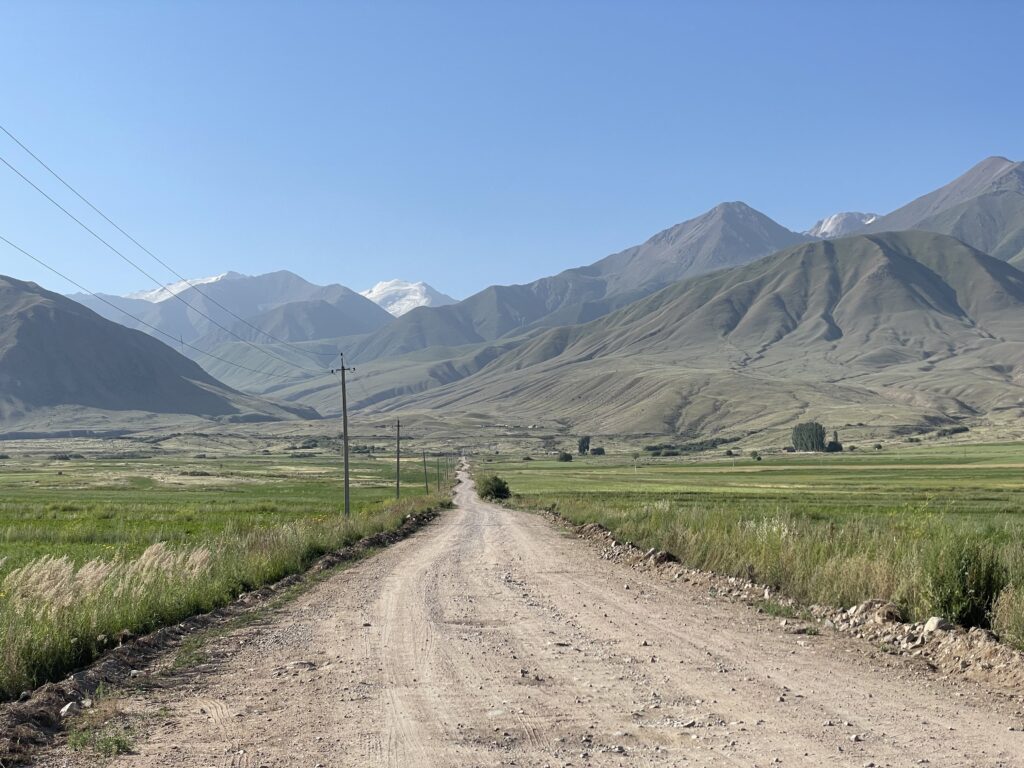
The best time to visit
The best time to visit Kol-Ukok Lake is during the summer months, from late June to early September. At this time, the snow on the trails has melted enough to make the hike accessible, the lake is unfrozen, and the weather is relatively mild for such a high altitude.
In late spring (May–early June), the area is still thawing, and snow may block parts of the trail. The lake can be partially frozen, and nights are very cold.
In mid-summer (July–August), you’ll find the warmest conditions, lush alpine meadows with wildflowers, and active herders grazing their animals in the pastures. This is also when yurts are most likely to be set up along the route, offering food and lodging.
By late September, temperatures drop quickly, snow can return, and the yurts disappear as herders move back to lower valleys. After that, trekking becomes more difficult and sometimes unsafe without proper gear.
Where to stay in Kochkor?
I stayed one night at Guesthouse Malika, and it was one of the cleanest and cosiest accommodations I’ve had in Kyrgyzstan. The breakfast was big and filling, and I could leave part of my luggage for the duration of my hike to Kol Ukok. The owner is also a very sweet woman!
Where to stay at Kol-Ukok?
There are a few yurt camps at the lake, and I don’t think it makes a significant difference which one you choose.
You can also pitch your own tent anywhere you want. I camped near Yurt Camp Nurzhan & Toko and ate dinner there. It was the best meal that I had in Kyrgyz yurts.
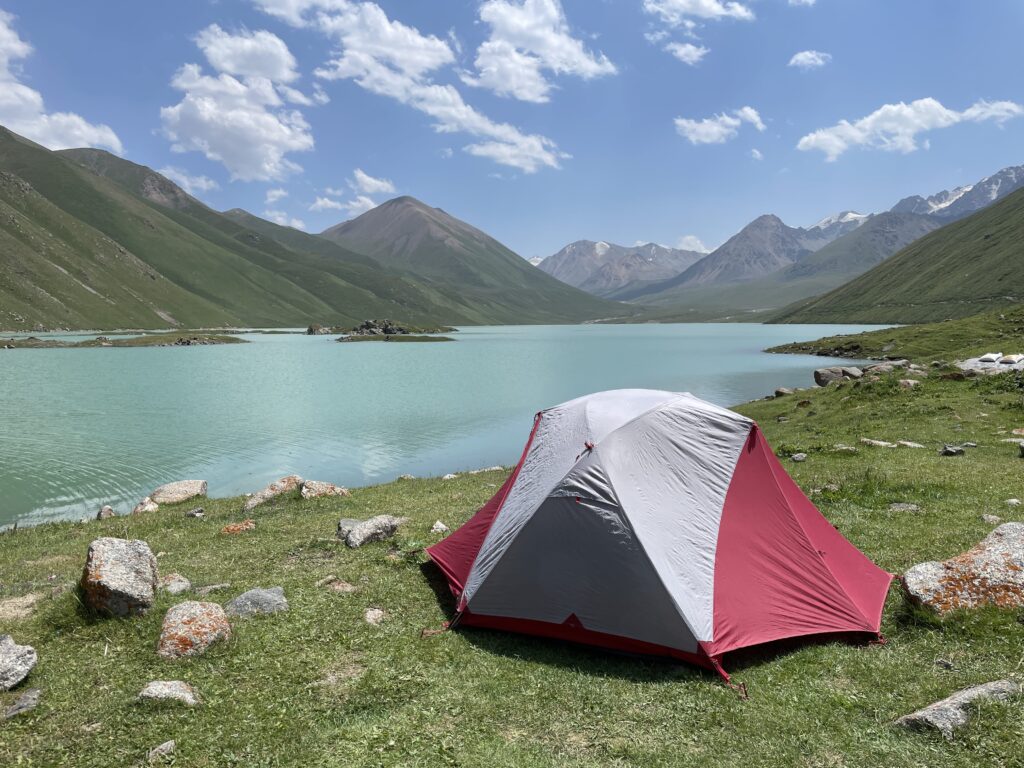

What to see in Kochkor
Kochkor doesn’t have too much to offer, but if you have some time before resupplying and hitting the trail, then have a look at the Historical Museum (Tarykh Muzey – Istoricheskiy Muzey).
There are displays of local traditional arts, cultural artefacts, and domestic/household items, giving visitors a sense of how people in the region lived, worked, and what their customs were.
One special part of the museum is an exhibit about Cholponbek Bazarbaev, a prominent ballet artist from Kochkor who became a “People’s Artist of the USSR” in 1982.
Lenin Monument in Kochkor
Another sight in Kochkor is a statue of Vladimir Lenin located in front of the regional government building. It’s a Soviet-era monument, silver-painted, and is still standing. The monument is an example of the many Lenin statues that the Soviet system placed in towns and cities across Central Asia. These monuments were meant to symbolise the political order, Soviet power, ideological unity, etc. Over time, many such statues have been removed or relocated in various parts of the former USSR, depending on local politics, cultural changes. In Kochkor’s case, the statue remains.
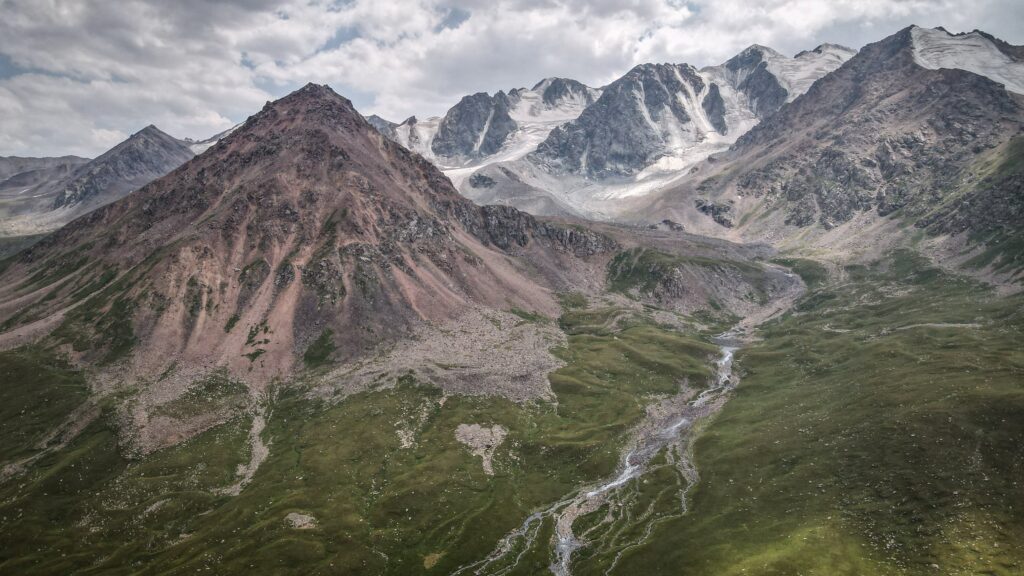
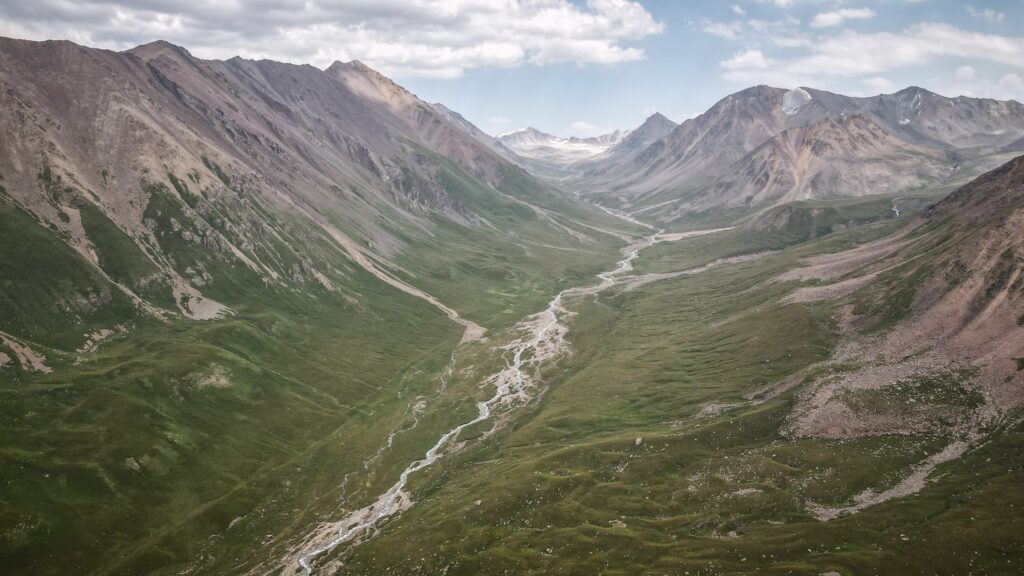
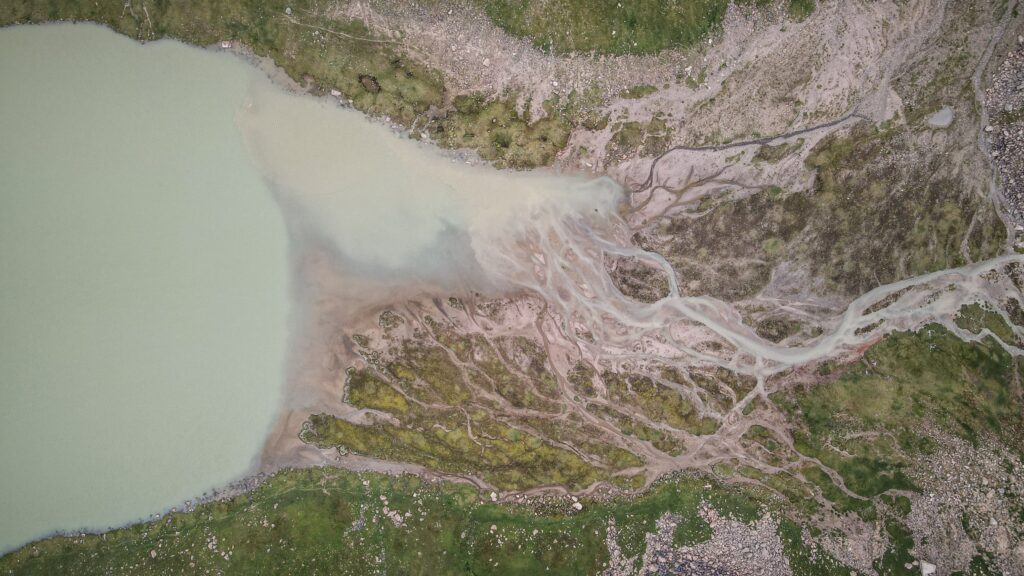
Hiking to Kol Ukok
The breakfast at my guesthouse was excellent, though I was still feeling a little off after last night’s pizza. Even so, I set out to find a taxi to the trailhead. The first driver I approached on the main road quoted me 500 SOM and had an attitude I didn’t care for, so I passed. A little further on, I came across another driver in an old Lada. He was much friendlier, and we quickly agreed on a fair price of 200 SOM.
The hike to Kol Ukok Lake itself wasn’t exactly inspiring. The path was just a wide dirt road, the kind you could easily drive with almost any car, even a sedan. The midday sun made it hot and draining, and paired with my unsettled stomach, it wasn’t the most pleasant part of the day. Still, I pressed on and reached the lake around 1 PM.
I pitched my tent near a yurt camp, ordered dinner for later, and then set off toward another destination: Kel Tor Lake. This hike was the complete opposite of the first – absolutely stunning. I started along the right bank of Kol Ukok before the landscape suddenly opened into a vast valley. Another yurt camp stood there, but I veered right, following a lively stream up toward a waterfall.
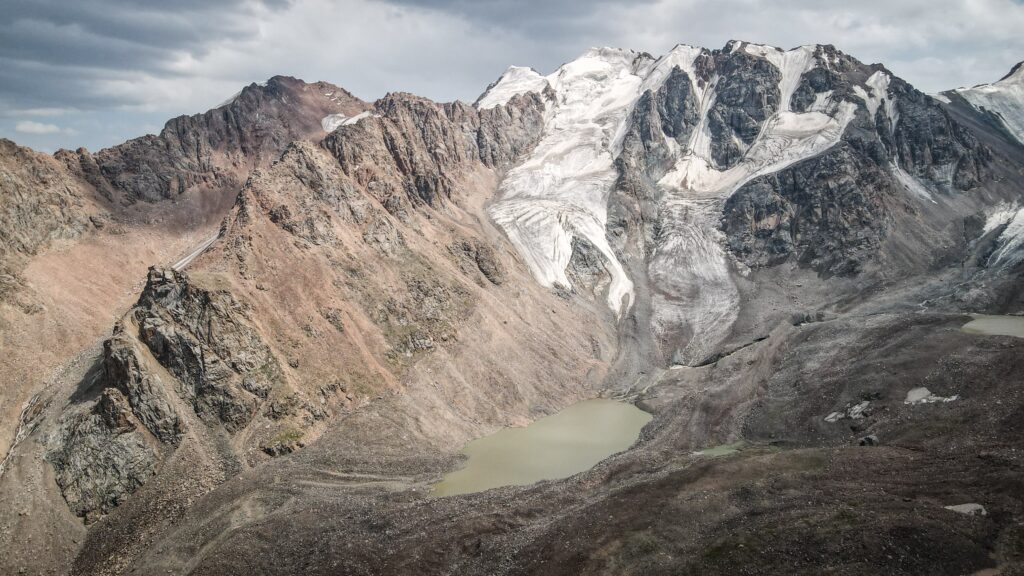

The climb was steep and exhausting, but when I finally pulled myself to the top, I was rewarded with the sight of Kel Tor Lake. Nestled among dramatic peaks and glaciers, the lake felt like a hidden gem. It was wonderfully peaceful, with only two other tourists in sight. As the weather shifted and light rain began to fall, I reluctantly started my descent back to camp.
Dinner in the yurt was delicious, and the company even better. I shared the table with a mix of travellers and a local Kyrgyz guide, who told us fascinating stories about Kyrgyz traditions and culture. As the sun dipped below the mountains, I savoured the last warm rays before retreating to my sleeping bag against the growing evening chill.
Looking back, it was a long and demanding day. If you’re not confident in your fitness or simply prefer a more relaxed pace, I’d recommend skipping the initial road hike to Kol Ukok. You can drive straight there and save your energy for the far more scenic and rewarding trail up to Kel Tor Lake. Just remember to negotiate the price of the transfer or try to hitchhike!
